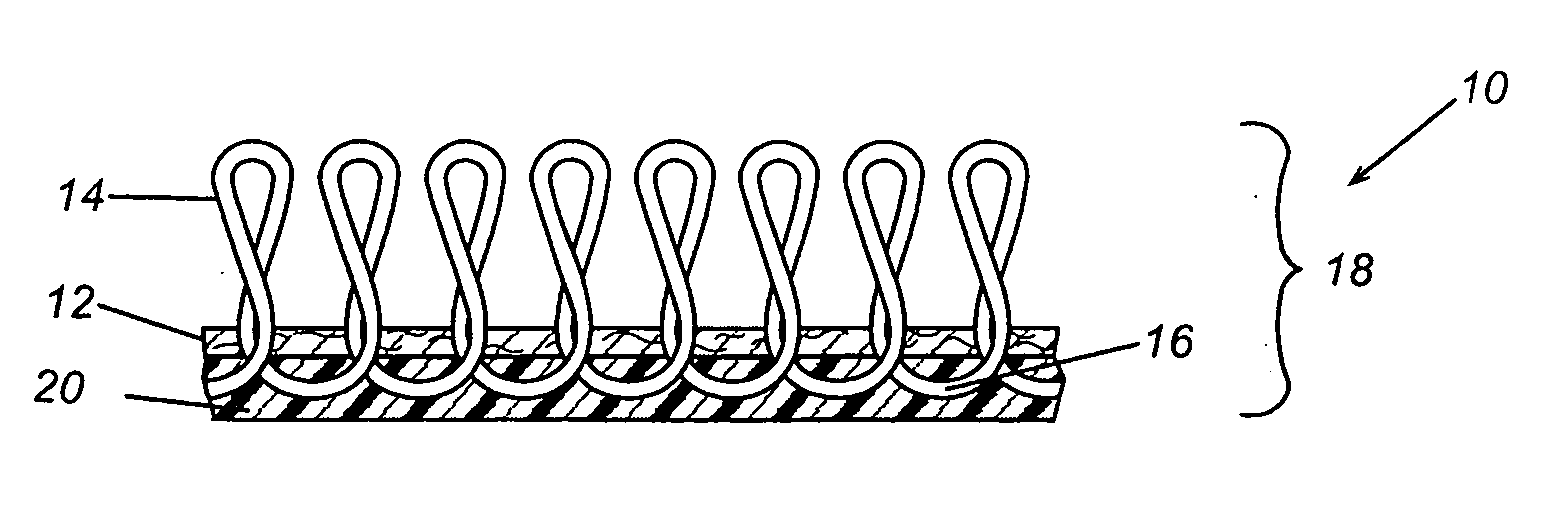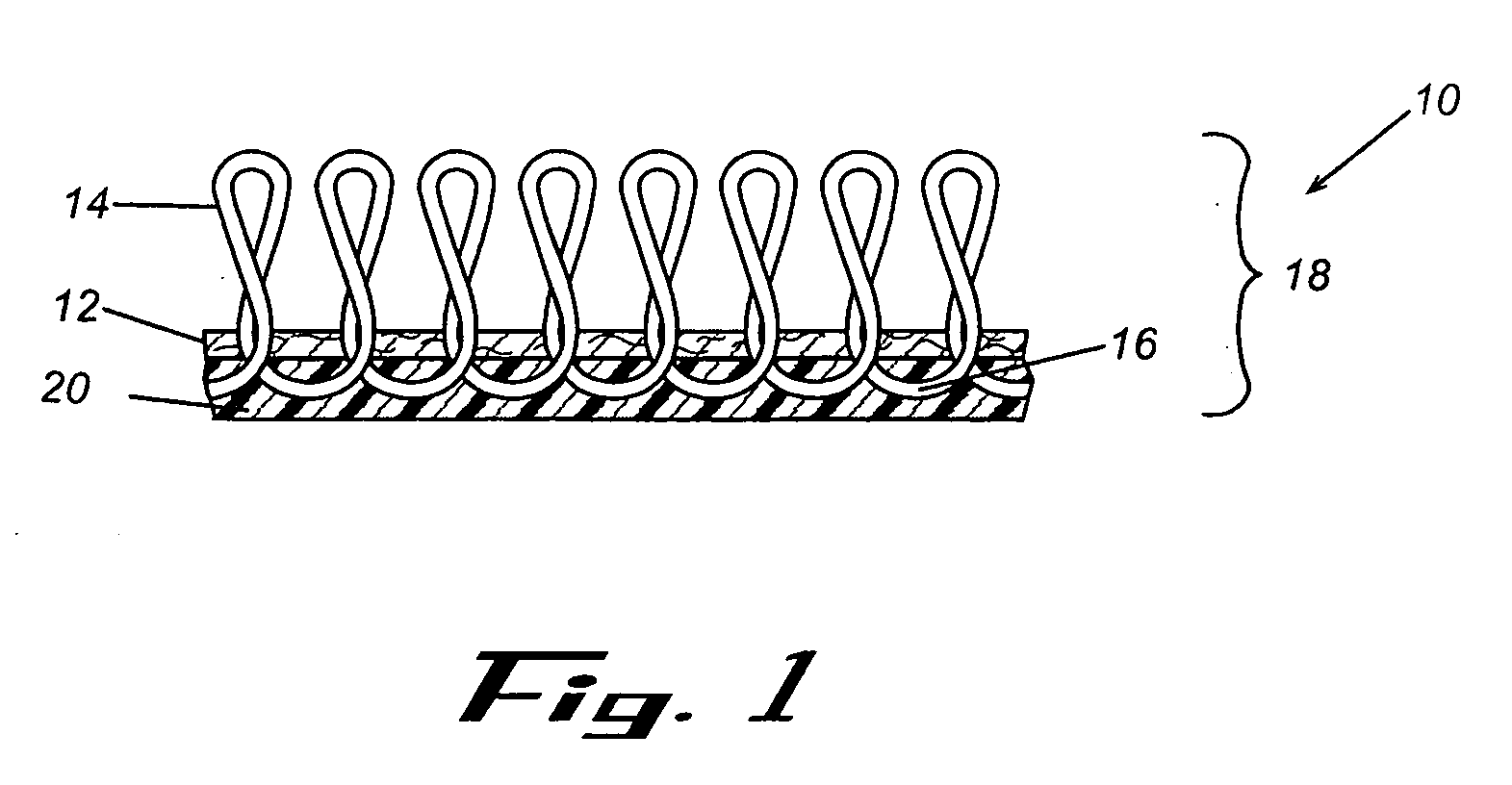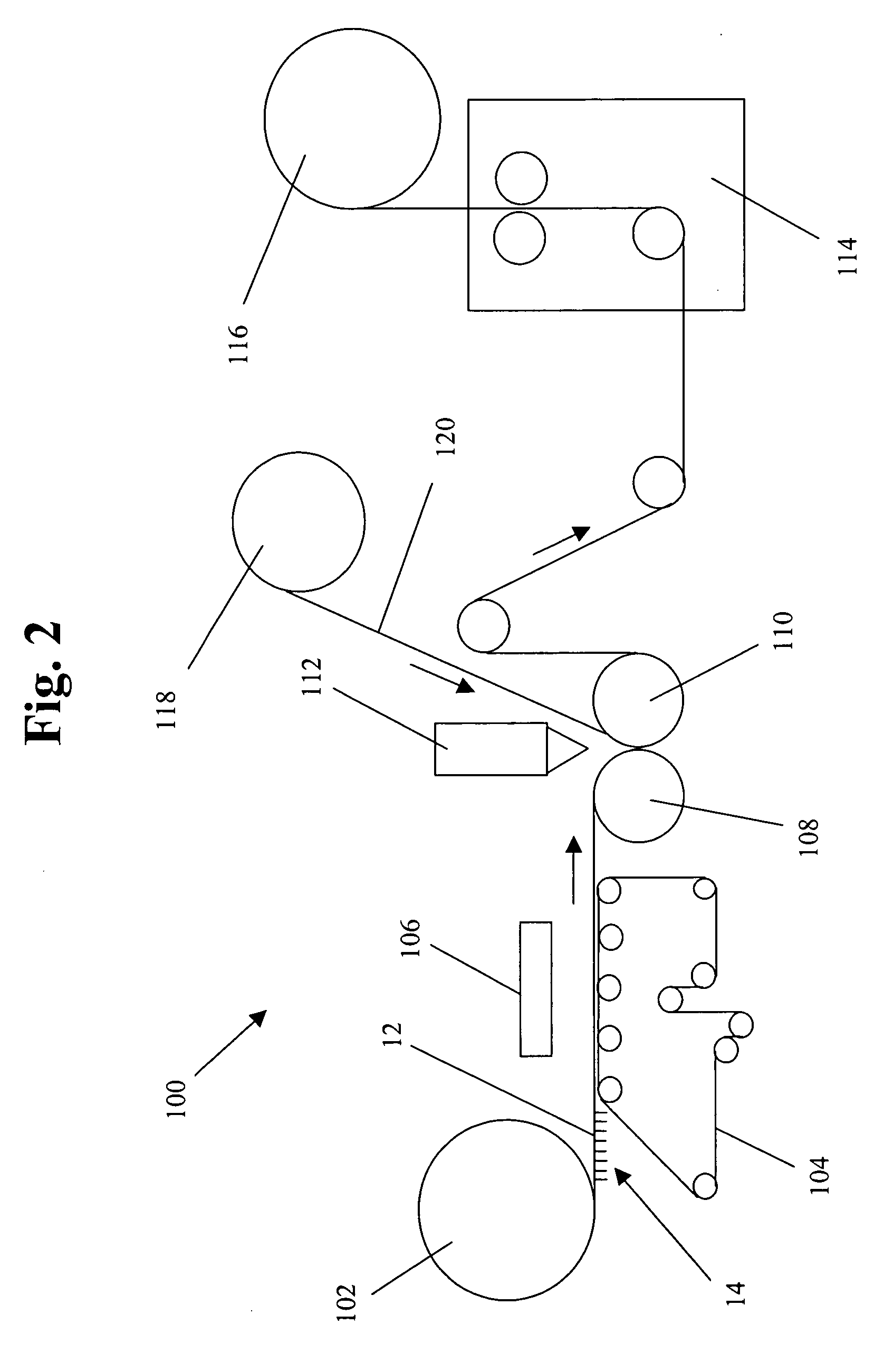Floor covering product and method of making same
a technology of floor coverings and products, applied in the field oftextile floor covering materials, can solve the problems of bath mats or scatter rug discarded, non-skid backings becoming brittle and/or degraded, staining or discoloring the flooring material upon which the bath mat or scatter rug is placed, etc., to achieve the effect of reducing costs and facilitating the rheology and viscosity of extruded resin
- Summary
- Abstract
- Description
- Claims
- Application Information
AI Technical Summary
Benefits of technology
Problems solved by technology
Method used
Image
Examples
example 1
[0034] A floor covering product 10 comprising a primary backing 12 of polypropylene tufted with nylon a cut pile 14 is provided. The non-skid, thermoplastic polymer coating composition that is fed into the extruder 112 is shown in Table 2 below.
TABLE 2IngredientAmount (% by weight)ExxonMobil 1703 Vistalon70%PolypropyleneExxonMobil Achieve 6936G1 EPDM30%Akzo Nobel Perkadox BC-40K PD1%Peroxide
[0035] The non-skid, thermoplastic polymer formulation shown in Table 2 above has a softening temperature of approximately 215° F.
[0036] For the formulation shown above in Table 2, the process parameters shown in Table 3 below are used.
TABLE 3Process ParameterValuePreheat temperature220° F.Extruder type28 mm co-rotating twin screwExtrusion temperature400° F.Nip roller temperature 80° F.Nip roller pressure110 pounds per linear inchNon-skid coating weight16 oz per square yard
[0037] The floor covering material is processed as described above using the apparatus shown in FIG. 2. The finished pro...
PUM
| Property | Measurement | Unit |
|---|---|---|
| softening temperature | aaaaa | aaaaa |
| temperature | aaaaa | aaaaa |
| temperature | aaaaa | aaaaa |
Abstract
Description
Claims
Application Information
 Login to View More
Login to View More - R&D
- Intellectual Property
- Life Sciences
- Materials
- Tech Scout
- Unparalleled Data Quality
- Higher Quality Content
- 60% Fewer Hallucinations
Browse by: Latest US Patents, China's latest patents, Technical Efficacy Thesaurus, Application Domain, Technology Topic, Popular Technical Reports.
© 2025 PatSnap. All rights reserved.Legal|Privacy policy|Modern Slavery Act Transparency Statement|Sitemap|About US| Contact US: help@patsnap.com



